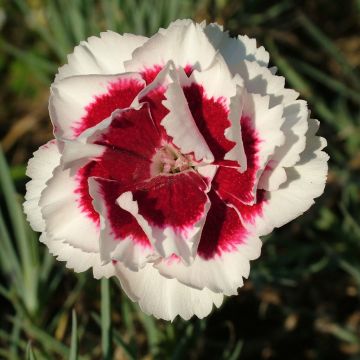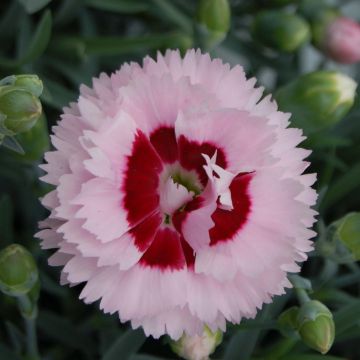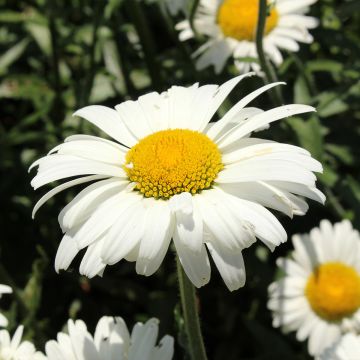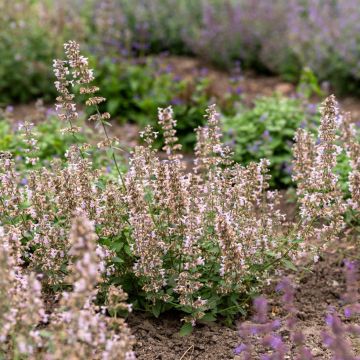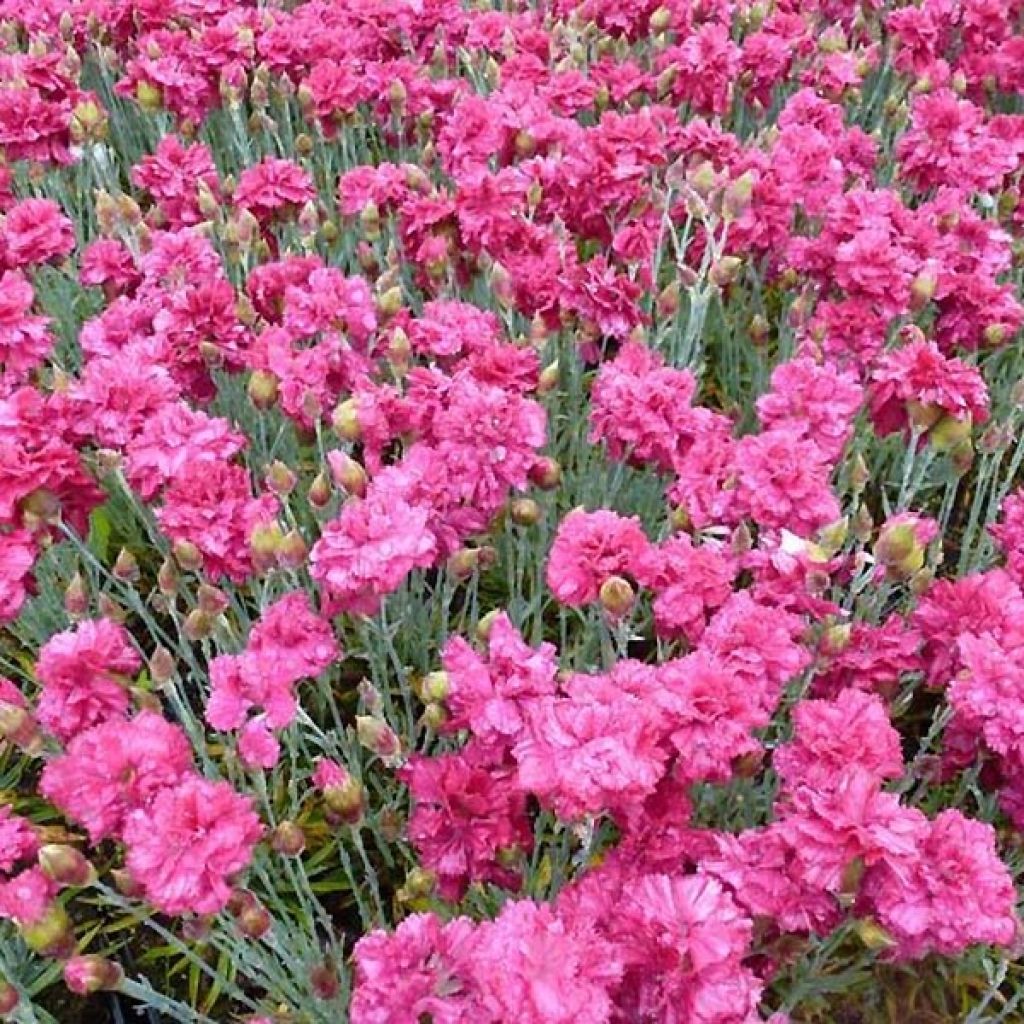

Dianthus plumarius Heidi - Oeillet mignardise
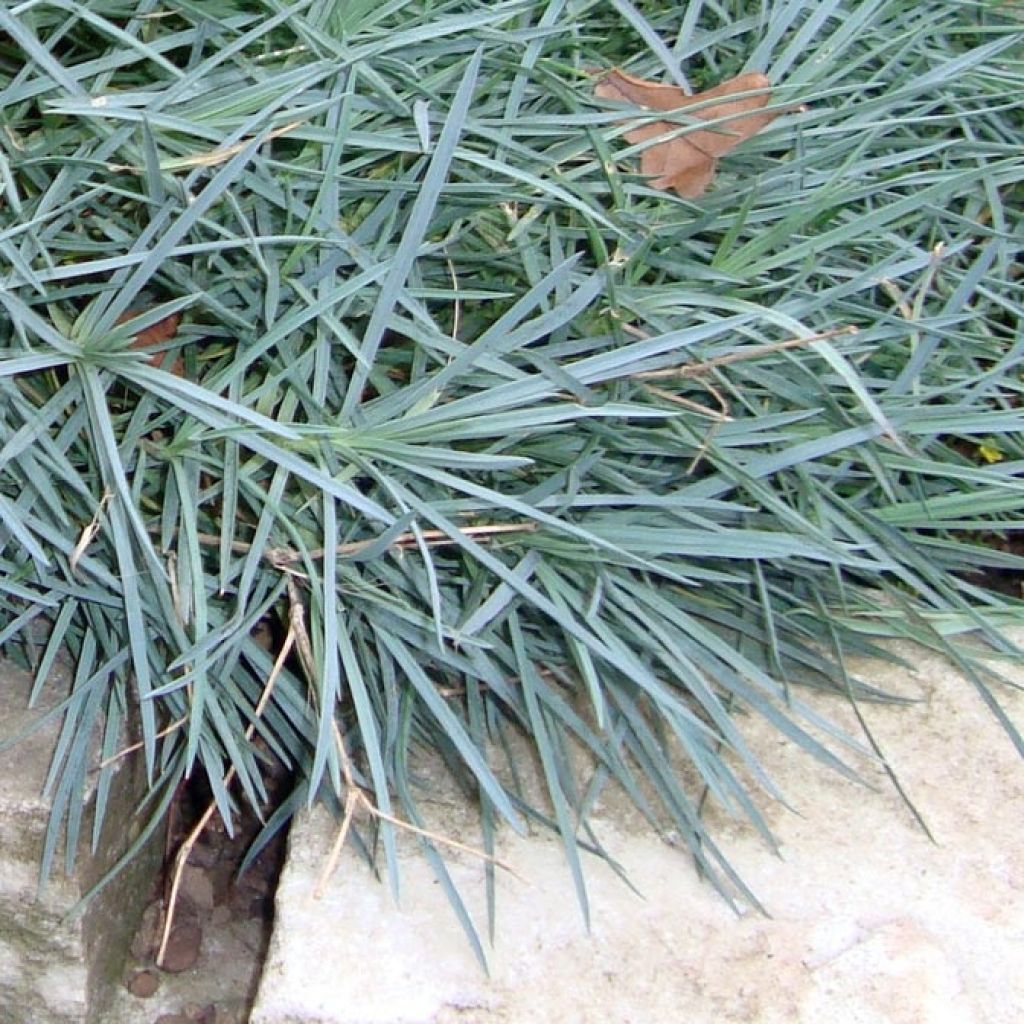

Dianthus plumarius Heidi - Oeillet mignardise
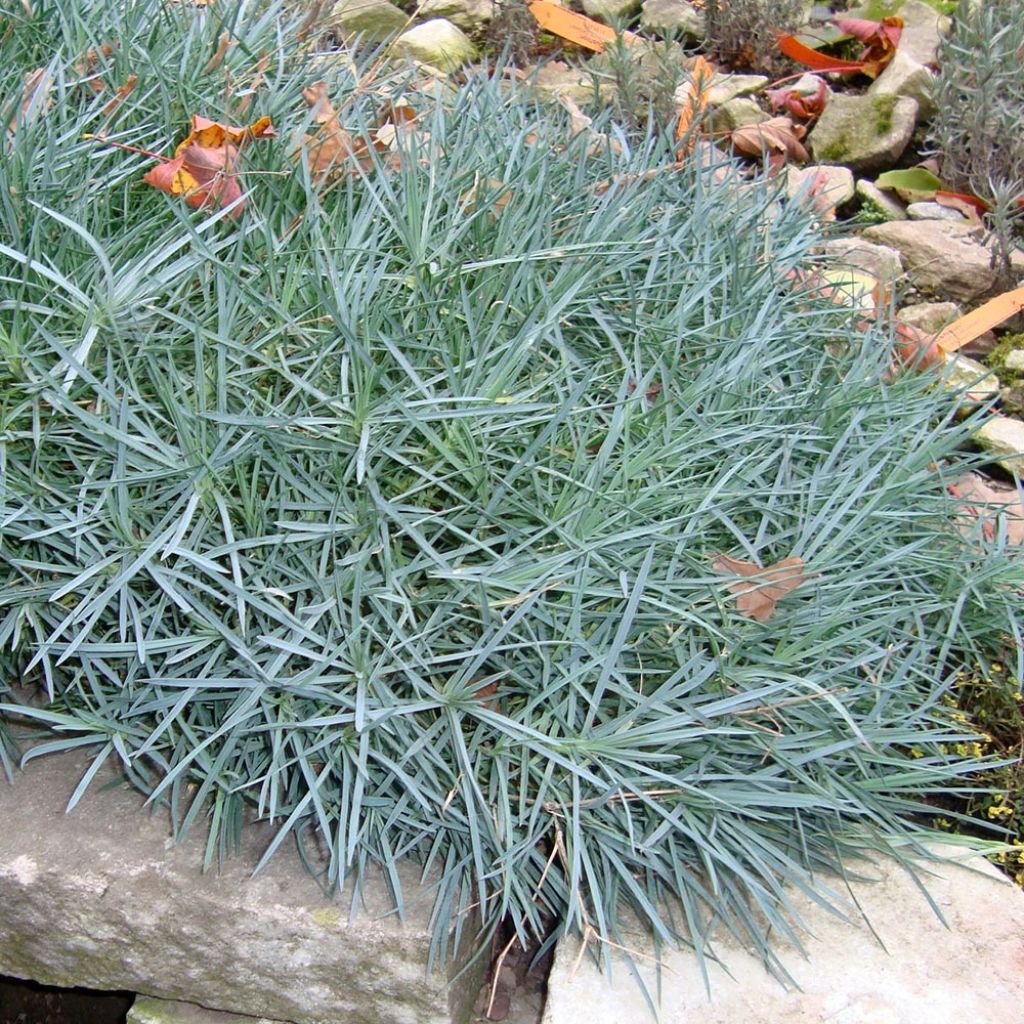

Dianthus plumarius Heidi - Oeillet mignardise
Dianthus plumarius Heidi
Dianthus x plumarius Heidi
Garden Pink, Cottage Pink, Grass Pink, Carnation
Dianthus plumarius, arrived in excellent health, is eagerly awaiting the flowering.
PHILS, 26/12/2023
This item cannot be shipped to the selected country
Delivery charge from €5.90
More information
Schedule delivery date,
and select date in basket
This plant carries a 12 months recovery warranty
More information
We guarantee the quality of our plants for a full growing cycle, and will replace at our expense any plant that fails to recover under normal climatic and planting conditions.
From €5.90 for pickup delivery and €6.90 for home delivery
Express home delivery from €8.90.
Does this plant fit my garden?
Set up your Plantfit profile →
Description
Dianthus plumarius 'Heidi' is a sweet william that displays a long flowering period from June to September. Its flowers are fully double and intensely red. It stands out for its pronounced fragrance. Particularly suitable for container gardening due to its small size and floribundity, it is also an excellent perennial for sunny borders, where it forms persistent cushions of beautiful grey-blue even in winter.
Dianthus 'Heidi' belongs to the Caryophyllaceae family. It is one of the many cultivars resulting from the cross-breeding of D. plumarius and D. caryophyllus. D. plumarius is a European perennial that is the main ancestor of the different groups of sweet williams, both old-fashioned and modern. D. caryophyllus is Mediterranean and has passed on to its descendants its wonderful clove fragrance and its good tolerance to calcareous and dry soils. This sweet william has a fairly rapid growth rate. Its mature size will not exceed 25cm (10in) in height with a spread of 30cm (12in), or even more. This sweet william forms a dense clump. From June to September, 4 to 5cm (2in) wide double flowers with slightly serrated petals emerge at the end of short, often branched stems. Its linear, glabrous, pointed, evergreen, and leathery leaves are of a superb grey-blue colour.
Dianthus 'Heidi' is a very pretty plant for patios or balconies. It is hardy to at least -15°C (5°F). It is undemanding in terms of water, but is sun-loving. It will thrive in well-drained borders, embankments, and rockeries. Its beautiful fragrant flowers bring undeniable charm to even the humblest decor. For example, it can be placed in front of other white, pink, or bicoloured carnations ('Devon Dove', 'Cranmere Pool', 'Devon Cream', 'Letitia Wyatt', 'Whatfield Gem'), or to accompany the blue bells of campanulas, the lavender-blue mosses of catmints, small lavenders, or flowering cushions such as helianthemums, silenes, wall bellflowers, Caucasian rockcress, Phlox subulata, Erigeron karvinskianus, and Geranium sanguineum. To evoke gardens of the past, a small border of these delightful carnations can be planted at the base of peony clumps and old roses. This plant forms a lovely display between the stones of a wall or paving, in a trough or in a container.
Report an error about the product description
Dianthus plumarius Heidi in pictures
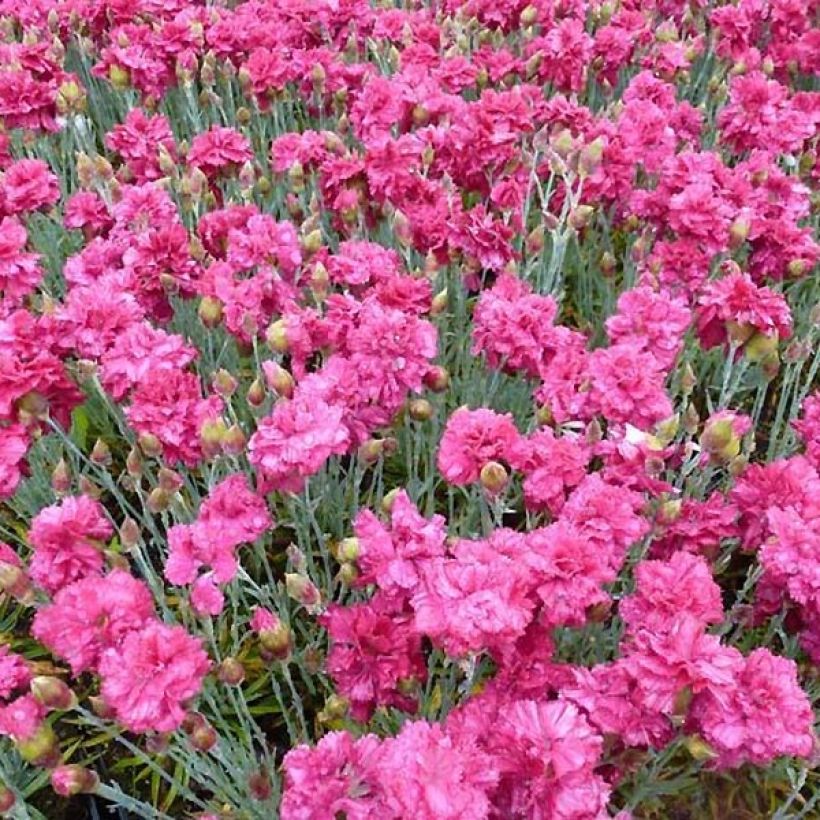

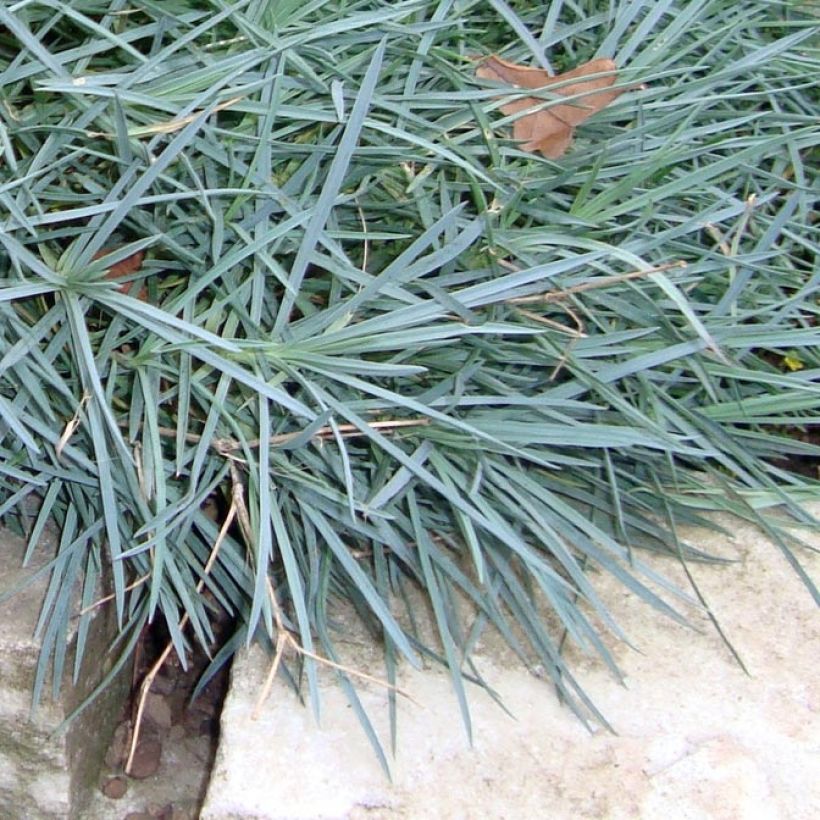

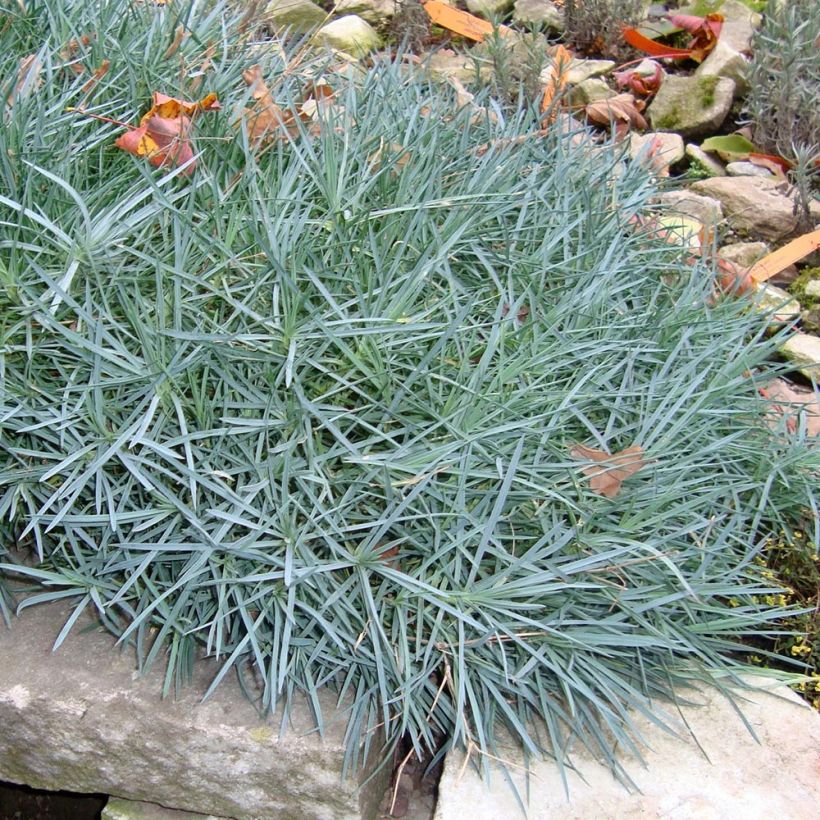

Flowering
Foliage
Plant habit
Botanical data
Dianthus
x plumarius
Heidi
Caryophyllaceae
Garden Pink, Cottage Pink, Grass Pink, Carnation
Cultivar or hybrid
Other Dianthus - Pinks
Planting and care
Plant Dianthus 'Heidi' in ordinary, dry, light and permeable, humus-rich or gravelly soil that is preferably limestone. It likes moist but well-drained soil. Gravel-rich soil gives good results. In the ground, this plant is quite hardy, resistant to temperatures as low as -15°C (5°F). It prefers a very sunny exposure. Prune some of the foliage with shears after flowering to maintain a dense habit. In poor soil, it will be useful to apply a balanced fertiliser in March. It is useful to divide the clumps every 3 years to rejuvenate those whose base is thinning. You can propagate using layering or by taking cuttings.
Planting period
Intended location
Care
-
, onOrder confirmed
Reply from on Promesse de fleurs
Summer flowering perennials
Haven't found what you were looking for?
Hardiness is the lowest winter temperature a plant can endure without suffering serious damage or even dying. However, hardiness is affected by location (a sheltered area, such as a patio), protection (winter cover) and soil type (hardiness is improved by well-drained soil).

Photo Sharing Terms & Conditions
In order to encourage gardeners to interact and share their experiences, Promesse de fleurs offers various media enabling content to be uploaded onto its Site - in particular via the ‘Photo sharing’ module.
The User agrees to refrain from:
- Posting any content that is illegal, prejudicial, insulting, racist, inciteful to hatred, revisionist, contrary to public decency, that infringes on privacy or on the privacy rights of third parties, in particular the publicity rights of persons and goods, intellectual property rights, or the right to privacy.
- Submitting content on behalf of a third party;
- Impersonate the identity of a third party and/or publish any personal information about a third party;
In general, the User undertakes to refrain from any unethical behaviour.
All Content (in particular text, comments, files, images, photos, videos, creative works, etc.), which may be subject to property or intellectual property rights, image or other private rights, shall remain the property of the User, subject to the limited rights granted by the terms of the licence granted by Promesse de fleurs as stated below. Users are at liberty to publish or not to publish such Content on the Site, notably via the ‘Photo Sharing’ facility, and accept that this Content shall be made public and freely accessible, notably on the Internet.
Users further acknowledge, undertake to have ,and guarantee that they hold all necessary rights and permissions to publish such material on the Site, in particular with regard to the legislation in force pertaining to any privacy, property, intellectual property, image, or contractual rights, or rights of any other nature. By publishing such Content on the Site, Users acknowledge accepting full liability as publishers of the Content within the meaning of the law, and grant Promesse de fleurs, free of charge, an inclusive, worldwide licence for the said Content for the entire duration of its publication, including all reproduction, representation, up/downloading, displaying, performing, transmission, and storage rights.
Users also grant permission for their name to be linked to the Content and accept that this link may not always be made available.
By engaging in posting material, Users consent to their Content becoming automatically accessible on the Internet, in particular on other sites and/or blogs and/or web pages of the Promesse de fleurs site, including in particular social pages and the Promesse de fleurs catalogue.
Users may secure the removal of entrusted content free of charge by issuing a simple request via our contact form.
The flowering period indicated on our website applies to countries and regions located in USDA zone 8 (France, the United Kingdom, Ireland, the Netherlands, etc.)
It will vary according to where you live:
- In zones 9 to 10 (Italy, Spain, Greece, etc.), flowering will occur about 2 to 4 weeks earlier.
- In zones 6 to 7 (Germany, Poland, Slovenia, and lower mountainous regions), flowering will be delayed by 2 to 3 weeks.
- In zone 5 (Central Europe, Scandinavia), blooming will be delayed by 3 to 5 weeks.
In temperate climates, pruning of spring-flowering shrubs (forsythia, spireas, etc.) should be done just after flowering.
Pruning of summer-flowering shrubs (Indian Lilac, Perovskia, etc.) can be done in winter or spring.
In cold regions as well as with frost-sensitive plants, avoid pruning too early when severe frosts may still occur.
The planting period indicated on our website applies to countries and regions located in USDA zone 8 (France, United Kingdom, Ireland, Netherlands).
It will vary according to where you live:
- In Mediterranean zones (Marseille, Madrid, Milan, etc.), autumn and winter are the best planting periods.
- In continental zones (Strasbourg, Munich, Vienna, etc.), delay planting by 2 to 3 weeks in spring and bring it forward by 2 to 4 weeks in autumn.
- In mountainous regions (the Alps, Pyrenees, Carpathians, etc.), it is best to plant in late spring (May-June) or late summer (August-September).
The harvesting period indicated on our website applies to countries and regions in USDA zone 8 (France, England, Ireland, the Netherlands).
In colder areas (Scandinavia, Poland, Austria...) fruit and vegetable harvests are likely to be delayed by 3-4 weeks.
In warmer areas (Italy, Spain, Greece, etc.), harvesting will probably take place earlier, depending on weather conditions.
The sowing periods indicated on our website apply to countries and regions within USDA Zone 8 (France, UK, Ireland, Netherlands).
In colder areas (Scandinavia, Poland, Austria...), delay any outdoor sowing by 3-4 weeks, or sow under glass.
In warmer climes (Italy, Spain, Greece, etc.), bring outdoor sowing forward by a few weeks.




































